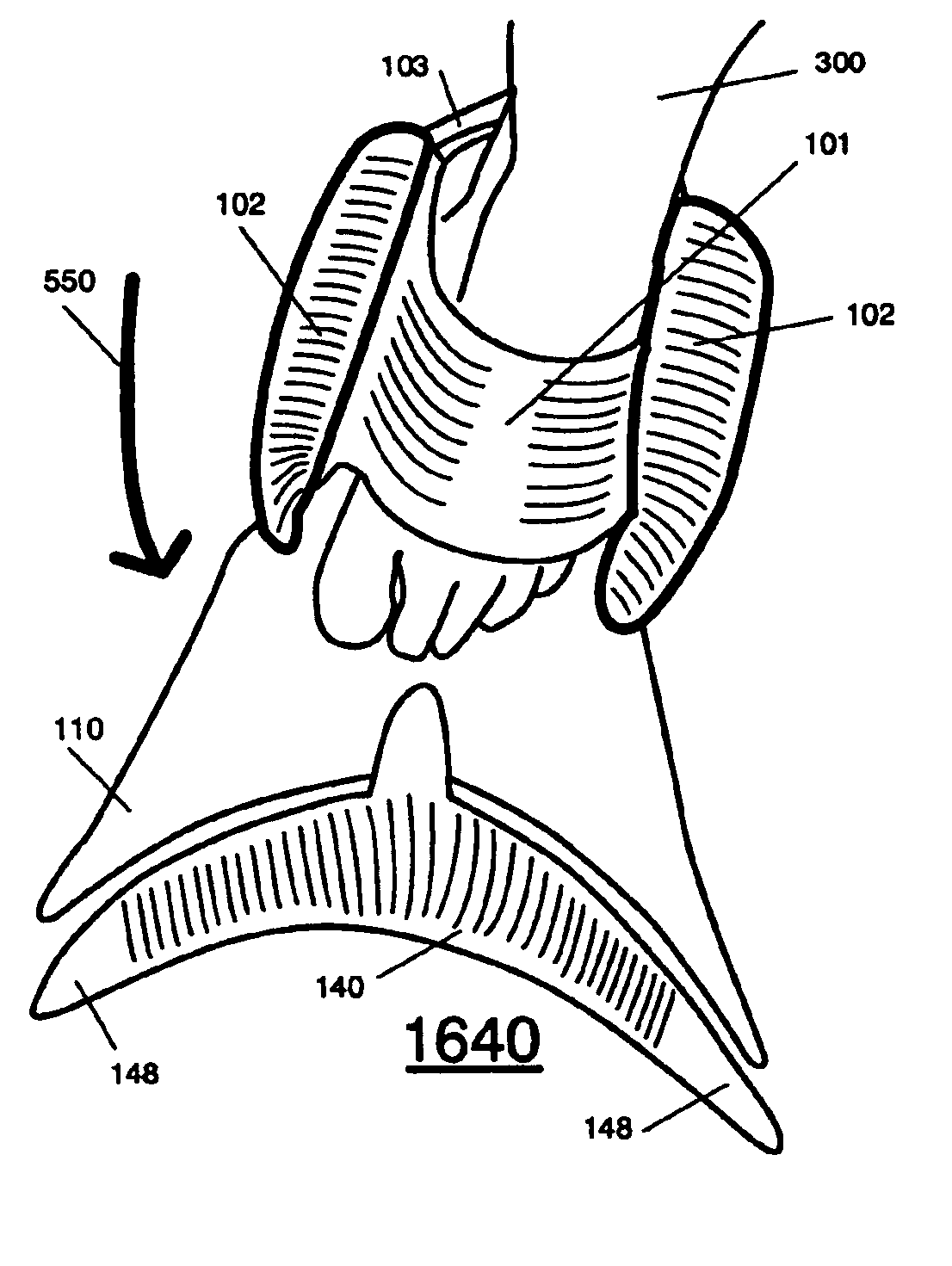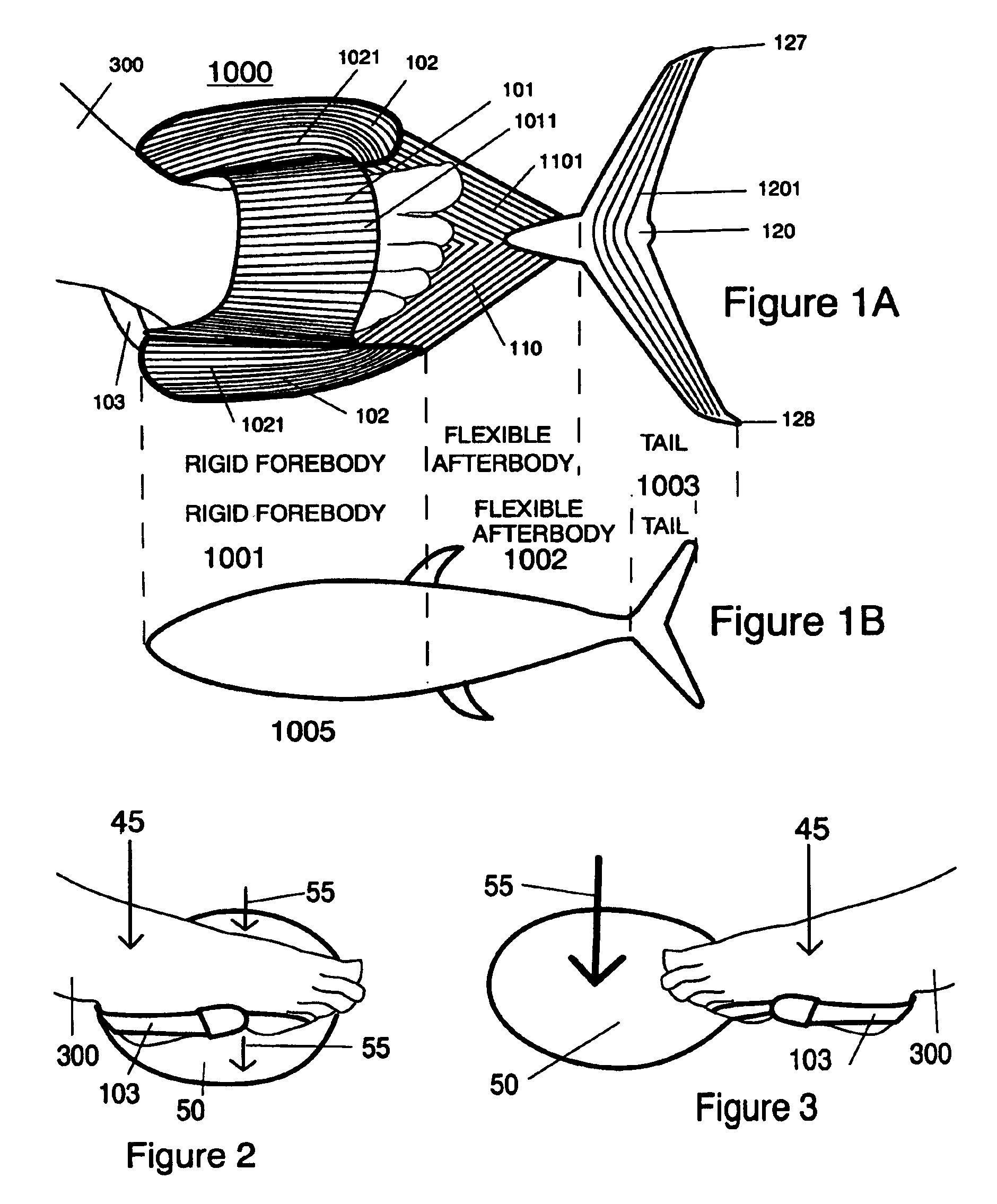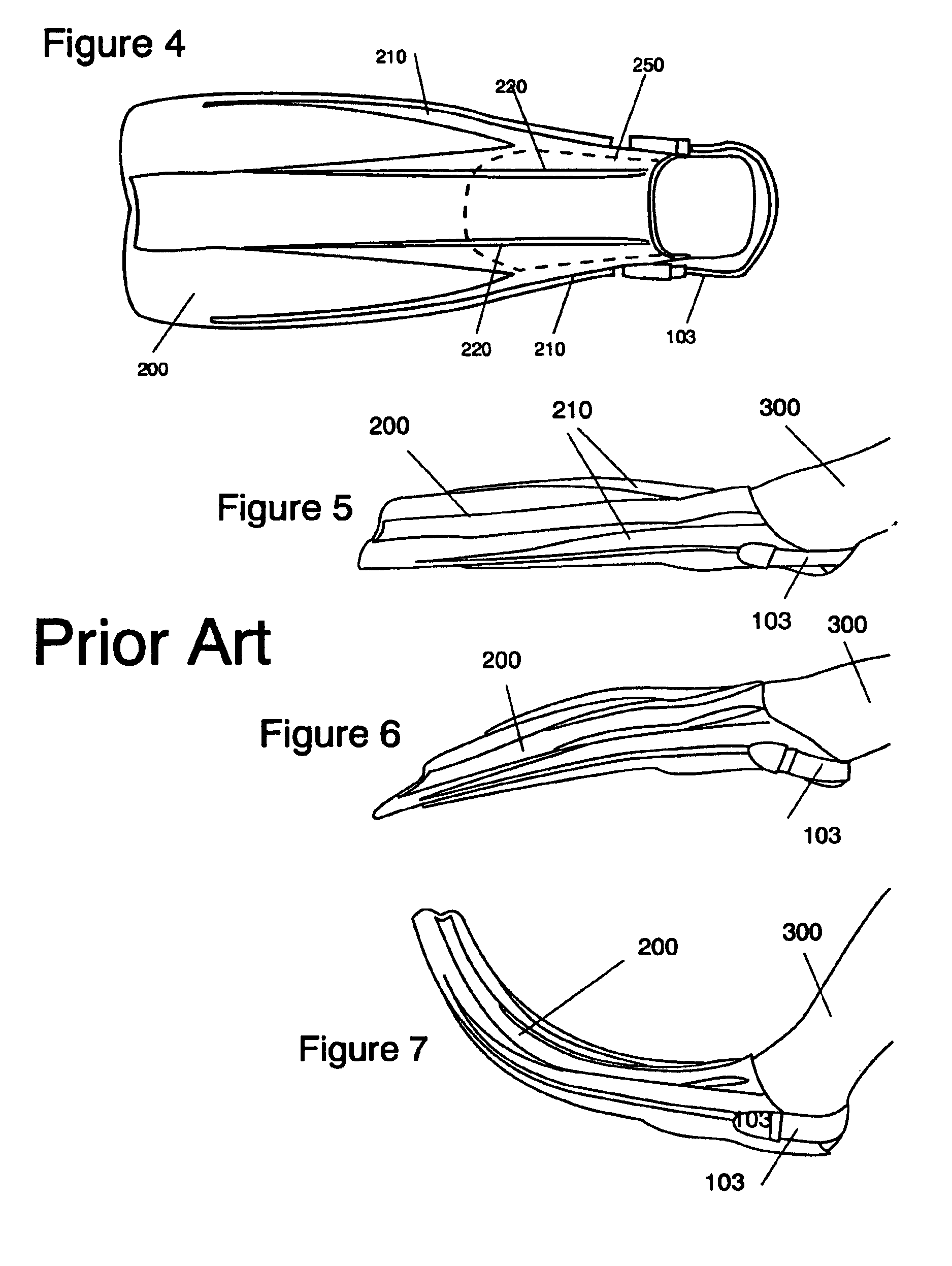Ergonomic swim fin apparatus
a fin and ergonomic technology, applied in the field of swim fins, can solve the problems of flat stiff paddle, uncomfortable use, pressure points on the top of the user's foot, etc., and achieve the effect of creating additional li
- Summary
- Abstract
- Description
- Claims
- Application Information
AI Technical Summary
Benefits of technology
Problems solved by technology
Method used
Image
Examples
embodiment 2000
[0085]FIG. 12 illustrates an embodiment 2000 of the swim fin apparatus that has many of the traits of the swimming sandal / shoe / short swim fin apparatus 1400 found in FIG. 9. The swim fin apparatus 2000 contains a foot-pocket 101, opposing channeling scoops 102 located on opposite sides of the foot-pocket 101, the flexible blade sole 108, and at least one securing strap 103.
[0086]In this embodiment, the symmetrical flexible blade sole 108 is detachable from the flexible blade 110, and may be selectively attached and removed, for ease of shipping and handling. By providing a releasable attachment means such as a hook 1112 and catch 1111 at the toe end of the flexible blade sole 108, the distal end of the flexible blade 110 is removable, enabling the user to easily walk on land, without removing the entire swim fin apparatus.
[0087]The releasable attachment means such as a hook 1112 and catch 1111 preferably comprises a complimentary hook 1112 and catch 1111 means. In the embodiment sho...
embodiment 1500
[0099]FIG. 18 and FIG. 20 show different perspective views of a swim fin sandal apparatus 1500. The swim fin sandal apparatus 1500 is made of any appropriate waterproof material used in manufacturing sandals or swim fins. The material selected must be strong enough to support the weight of a user, and the pressures exerted by the channeling scoops 102 during swimming. In this embodiment 1500, the bottom instep strap 1014 and top instep strap 1015 preferably have a system of hooks and loops type fasteners 1017 attached to the bottom instep strap 1014 and to the top instep strap 1015, so that the hooks and loops type fasteners 1017 provide releasable and adjustable securement when the top instep strap 1015 and the bottom instep strap 1014 are engaged.
[0100]The instep strap loop 1018 will hold the two sides of the swim fin sandal apparatus 1500 together at the instep when the top instep strap 1015 is secured to the bottom instep strap 1014. Any known securement means may be used. In FI...
embodiment 120
[0111]Each tail fin apparatus shown in FIG. 22 and FIG. 23 has a connecting point 125 and a securement means 145 respectively located along the longitudinal central axis of the swim fin apparatus 1000. The connecting point 125 or a securement means 145 can be a permanent attachment, a continuation of the flexible blade 110, or a releasable connecting means, 118, and 1181. In FIG. 22, the tail fin 120 has a leading edge 124 and a trailing edge 121 that extend in substantially straight lines across the tail fin 120. To decrease the drag created by vortices produced by moving through water, the tail fin edge 129 located at the distal sides of the tail fin 120, has a lifting surface that creates lift and channels the water towards the center of the tail fin 120. This pulls water away from the edge, and thus decreases the moving water that can be created as vortices and drag on the outer sides of the tail fin 120. The tip 148 of the tail fin edge 129 decreases in size and tapers to a poi...
PUM
 Login to View More
Login to View More Abstract
Description
Claims
Application Information
 Login to View More
Login to View More - R&D
- Intellectual Property
- Life Sciences
- Materials
- Tech Scout
- Unparalleled Data Quality
- Higher Quality Content
- 60% Fewer Hallucinations
Browse by: Latest US Patents, China's latest patents, Technical Efficacy Thesaurus, Application Domain, Technology Topic, Popular Technical Reports.
© 2025 PatSnap. All rights reserved.Legal|Privacy policy|Modern Slavery Act Transparency Statement|Sitemap|About US| Contact US: help@patsnap.com



